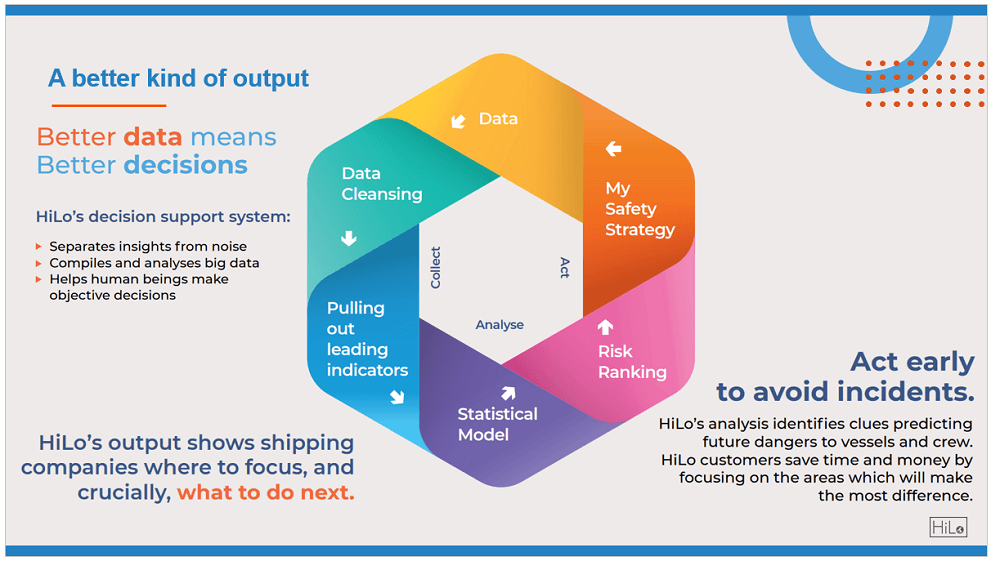With HiLo, Shipmanagers Can Act Early and Prevent Accidents

If shipmanagers had access to a crystal ball, they would be able to forecast every accident and take steps to avoid every casualty. That may not be possible, at least not yet, but safety analytics company HiLo has the next best thing. By examining thousands of incident reports from thousands of ships, HiLo has developed a deep understanding of the leading indicators of risk, and it uses its systematic knowledge to advise vessel operators on issues to monitor in their fleets.
How does it work? It's surprisingly simple in practice. HiLo takes in all of its members' safety-related data, in any format - inspections, audits, maintenance logs, incident reports, near misses - and enters all of it into an incident database, anonymizing personal information. This is unique to HiLo, as all other safety prediction companies draw primarily on publicly-reported data.
This trove of fleet information feeds into a sophisticated analytical model, built upon established safety-management standards and refined over six years of development. The model tracks hundreds of leading indicators, and it draws on known correlations between these indicators to pinpoint the specific areas for an operator to focus to prevent incidents on their fleet. Hence HiLo has found a unique way of combining unrelated data, standardizing it, and providing complete analysis to ship managers. This tool is called Pinpoint. For example, if a ship experiences main engine failures, and an audit finds signs of poor passage planning, these two unrelated events could affect navigation. The operator might get notification that their overall risk of a collision is on the rise.
How specific can this advice be? The HiLo main dashboard displays customers’ top three risks - for example, collision with a large vessel, an accident during personnel transfer, and confined-space asphyxiation. These predictions are intended to be simple and actionable: the company gets insight into its biggest potential issues with enough specificity to guide its safety-management efforts.
HiLo tracks fleetwide savings from avoiding undesirable events. The company calculates that each customer saves on average $3 million per year while using Pinpoint.
Case studies show just how precise and accurate the predictions can be. In one case, a HiLo subscriber's safety data pointed to the likelihood of a lifeboat drill casualty in the near future. The customer disagreed, since they had not had any issues with lifeboat operations in five years, and decided to take no action. Four months later, the company had a dangerous incident during a lifeboat drill - just as had been predicted. The company decided to start using HiLo's forecasts to drive their shipboard training and fleetwide safety campaigns.
In another case, Pinpoint detected an increased risk of bunker spill incidents for a company. Its ships had issues with high topping-up rates and with assigning enough personnel to supervise bunkering operations. HiLo pointed out the rising risk of a bunker spill - based on these leading indicators - and the company made adjustments to its procedures to prevent more serious problems. This illustrates the ideal outcome for a predictive, data-driven approach to safety: the vessel operator gets the opportunity to intervene early, before the next big accident happens.
This form of safety management has been common in shoreside industry for a long time, and HiLo has successfully adapted it for the maritime sector. There will always be a need for human experience and judgement when it comes to evaluating risk, but data-driven systems can elevate previously invisible problems to the attention of ship managers - before it's too late.
This article is sponsored by HiLo.
The opinions expressed herein are the author's and not necessarily those of The Maritime Executive.

